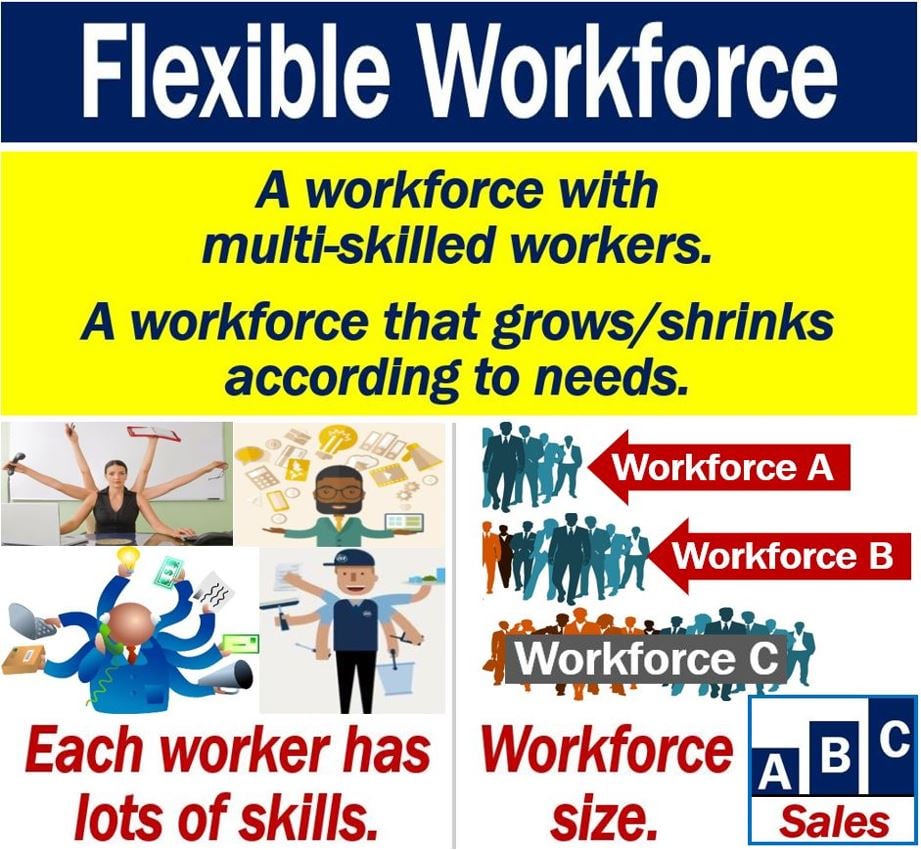A Flexible Workforce is a workforce that can perform a variety of different functions. In other words, it is a group of multi-skilled workers.
The term ‘flexible workforce’ may also refer to a workforce that grows and shrinks in size. Specifically, it grows and shrinks in size according to the employer’s needs. When orders increase, the workforce grows. On the other hand, when orders decline, the workforce shrinks.
Moreover, a flexible workforce is increasingly aligned with contemporary work preferences, emphasizing work-life balance and autonomy in one’s schedule.
The first half of this article describes a ‘flexible workforce’ when it refers to multi-skilled employees. The second half describes a workforce that adapts in size to business volume.

Employers tend to prefer a flexible workforce because they can adapt the business to the changing marketplace rapidly. Employees, on the other hand, prefer a permanent workforce, because they want job security and benefits.
Flexible workforce – multi-skilled
A ‘key employee‘ is somebody who is crucial for the well-being of a company. If that person leaves, the company could suffer considerably.
Employers can take out key person insurance, which protects them to a certain extent if the key employee leaves.
Another option is to have a flexible workforce, i.e., workers with many different skills.
Companies whose employees have multiple skills tend to have fewer key employee problems than other employers.
In fact, some employers have extensive cross-training programs specifically for that purpose. They train their employees so that they can step in if somebody leaves or becomes unavailable.
Flexible Specialization
Some employers adopt a strategy we call ‘Flexible Specialization.’ It is a business strategy companies take to make themselves more competitive.
With a Flexible Specialization strategy, you have employees with multiple skills and multi-use machinery, devices, and equipment.
Flexible workforce – growing/shrinking
The term ‘flexible workforce’ may also refer to the size of a workforce. Specifically, one that grows and shrinks according to business volume levels.
In other words, when business volume rises, i.e., sales increase, the workforce grows. Conversely, when business volume declines, the workforce shrinks.
This is difficult to do if all your employees are permanent workers. Firing permanent staff, in most parts of the world, is not easy. It can also be extremely expensive.
Flexible Staffing
As an alternative to permanent staffing, companies adopt a strategy we call ‘Flexible Staffing.’
With Flexible Staffing, the employer uses part-time workers, independent contractors, and temporary employees. It is an effective strategy if you want a flexible workforce.
Additionally, the advent of digital platforms has facilitated remote working possibilities, further enhancing workforce flexibility by allowing employees to work from various locations.
